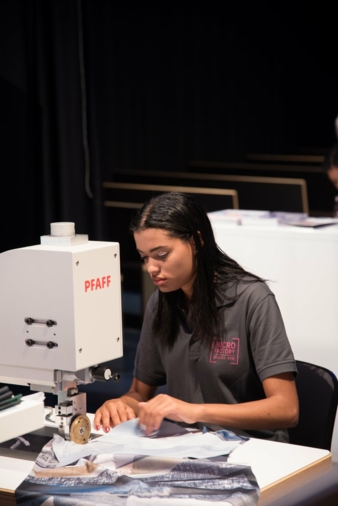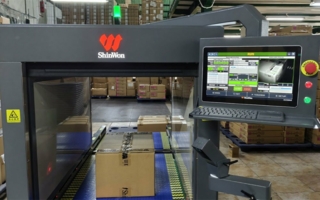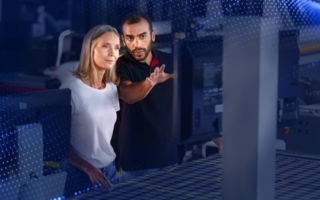10/04/2018 – Microfactory part 5 — auf Deutsch lesen
The worksteps in the Microfactory – Step 4: Finishing
After design, printing and cutting in the Microfactory, the next step is to assemble the individual pieces into one garment.
When individual fabric pieces are assembled, they become a garment – and ultrasonic welding machines from Pfaff Industrial in the Microfactory ensure perfect finishing.
Pfaff ultrasonic welding machines were used for the shirts produced at the Microfactory trade fair appearances to date. “The cut pieces of the shirt are made of synthetic material – they were printed in the upstream operation. The two layers of material are plasticized with the sonotrode and anvil wheel of ultrasonic welding machines in order to join the individual parts together to form a single garment. This creates a firm and functional seam – no needles or threads are used,” explains Kambiz Tavalla, Sales Representative at Pfaff Industrial.
The Pfaff 8312 ultrasonic welding machines
Pfaff used Pfaff 8312 ultrasonic welding machines. These machines uniquely combine the physical advantages of ultrasonic welding with the range of experience in sewing technology – the fabric is fused, continuously welded under pressure and subjected to rapidly changing pressure vibrations. The advantages of ultrasound technology are a high production speed due to the elimination of thread changes, thread breaks and skipped stitches, and a high degree of wearing comfort due to the non-surfacing seam, especially with lingerie articles.
The advantages of ultrasound technology
“Ultrasonic welding is a modern, future-oriented and economical alternative and a supplement to conventional sewing technology. The Pfaff 8312 is the first choice when garment fabrics with a high polymer content or technical nonwovens have to be finished. Especially when waterproof seams are required,” says Kambiz Tavalla. “New areas of application are constantly opening up for this technology, particularly in the apparel industry. Entire articles of clothing like functional and outdoor clothing, underwear and brassieres are already being welded using this technology.”




